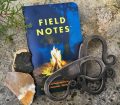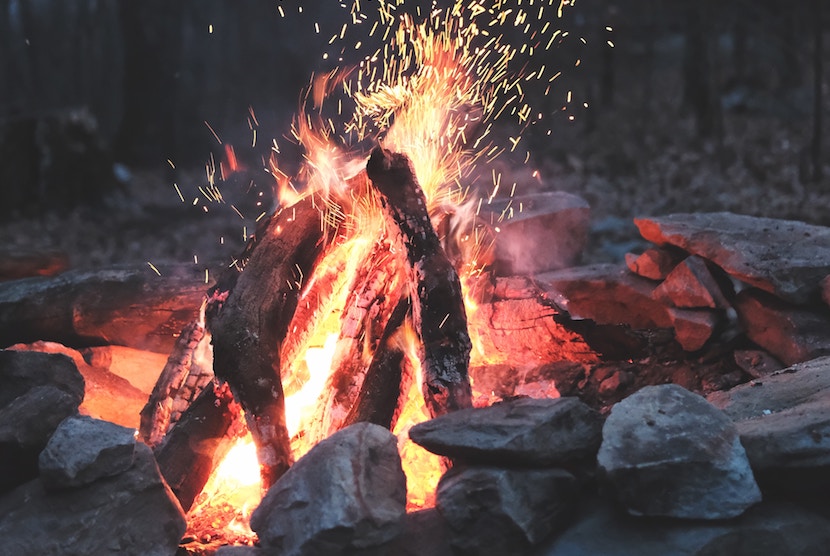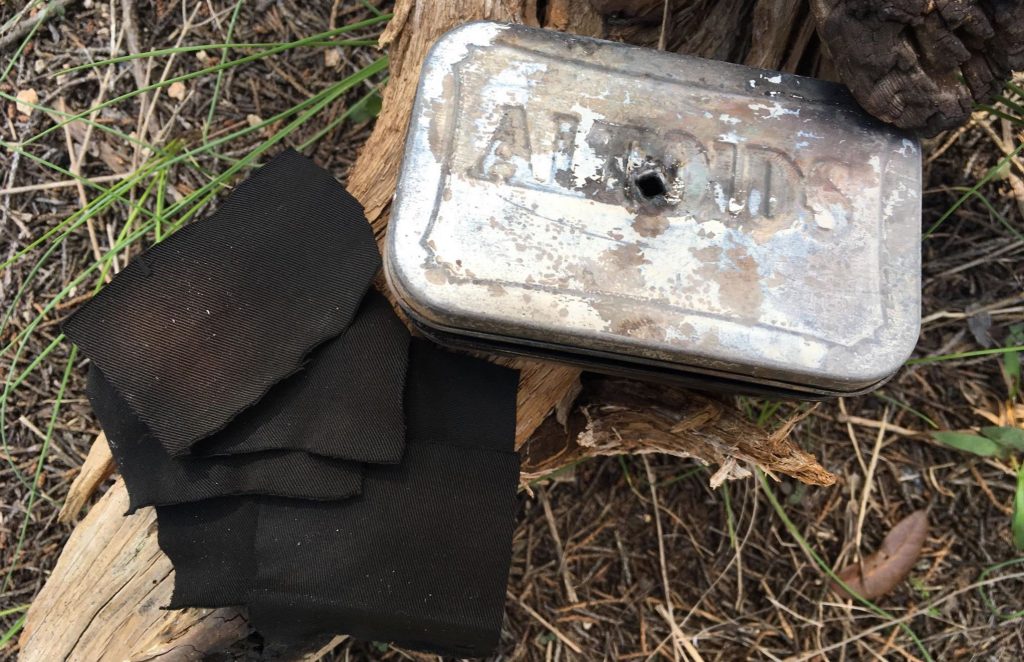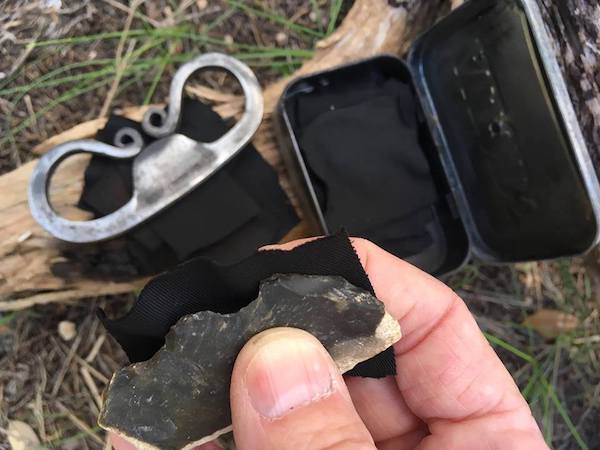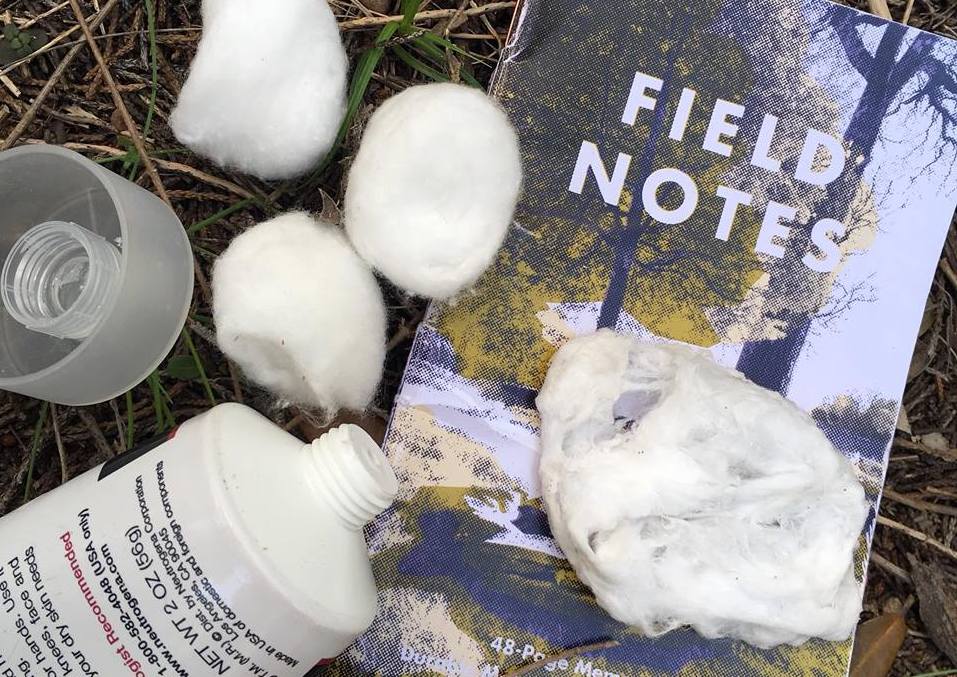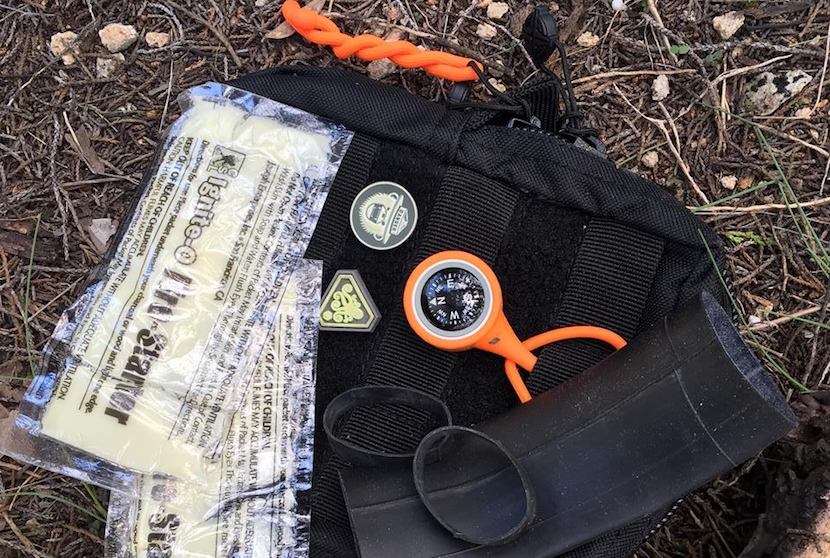We started this series with a post about the “why’s” of making fire – questioning and wondering about why we ought to learn and practice traditional fire starting methods. Between that post and this one, there were a couple of posts about a couple different methods of making sparks – ferrocerium rods, and carbon steel strikers. These are not an exhaustive list of fire starting methods – I haven’t posted about solar ignition with a lens or improvised lens or about using a bow drill or multiple other methods, but I hope this has been a good start.
Making sparks is one thing, but when the rubber meets the road, or where the heat meets the tinder, so to speak, is where things get hot.
Stack your wood
Making a cooking or campfire outside involves some wood – there are a couple great articles here at DRB about hatchets and axes, and if you haven’t already read them, go do that. I’ll wait…
OK! – Now go get yourself some wood. Logs, split wood, some sticks or kindling. Make it a nifty pile in the style you prefer. Arranging your logs in tipi’s, log cabins, stars, lean-to’s and random piles all work. Get some dry light tinder in there where you want the fire to start – feather sticks, dry grass nests, you know what to do.
Now that we’re ready, let’s talk about how we catch those sparks and turn them in to a fire.
Char Cloth and Fatwood
Some of the oldest fire helping bits are char cloth and fatwood.
Char cloth is a fun way to catch your sparks and keep them alive, and is fun to make. To make your char cloth takes a little work and practice but is very rewarding. First things first, get an Altoids tin or a similar container. It has to be airtight, or close to it, Poke a hole in the center of the lid. A standard finishing nail sized hole or a little larger works. It’s best to start small, as if the hole is too big, your cloth will burn fully and become useless ash.
Once you have your tin, you need some cloth. There are many opinions on what cloth works best, from cotton tee shirt to denim and lots in between, but in my experience, a little heavier cloth works better. I’ve used cut up swatches of old cotton cargo pants and medium weight denim most successfully. Lighter weight cloth seems easy to “overcook” and gets brittle for me.
Cut your cloth in to pieces that can lie flat in your tin. They shrink a bit in the process, so I try not to make them smaller than about two inches square. Stack them in the tin until they are loosely near the top. You don’t want to compress the pieces. This process is all about oxygen.
Then put the tin in to an existing fire or on a stove with the hole facing up. I like to make new char cloth as a fireside activity. Be sure you have some good sticks or tongs to be able to pull the tin out when the cloth is cooked! As the cloth oxidizes, you’ll see gas, smoke, and sometimes even flames come out of the hole. It’s a fun process. Watch the tin, and when it stops gassing/smoking, it should be done. Pull it out of the fire. You can put a nail in the hole or put a rock over it to try to prevent further oxidation if you like. I’ve let mine cool with and without the hole covered or plugged and it seems to make a tiny difference. If you are going to make a large amount, sometimes its good to count the pieces and time the cooking to make adjustments as needed for additional batches.
Once it’s cool, open the tin and see what you made! If the cloth is charcoal with the weave patterns and is still flexible, you win! If it still has color, it’s undercooked (toss it back in for a bit or start over), and if it is brittle, crumbly, or completely ash, well, you get the idea.
The cool thing is that a good piece of char cloth, when it catches a spark, will keep the ember and slowly burn outward for an amazing mount of time, getting faster and brighter if you blow on it a bit – it’s perfect to get your light tinder going.
It’s fun to make and an amazing piece of fire kit, but it also needs to stay dry to work. Keep that in mind, and your cloth in a ziploc.
If you use a flint and steel method to generate sparks, grab a piece of char cloth and try to toss some sparks in to it, or better yet, hold the cloth in the same hand/thumb and forefinger as your flint and if it’s on the “top”, strike the flint at a bout a 45 degree angle to help sparks hit the cloth. if it’s on the “bottom” of the flint, let the cloth hang over/out a bit to catch sparks. once you have it lit, keep it going with some small blowing and get it to your tinder. Practice it, it’s a fun and satisfying way to start a fire quickly with a flint and steel.
Fatwood is pine wood pieces heavily laden with sap. I consider fatwood a good second stage of my fire kit. It’s super easy to get started and burns well, but there is often an intermediate step between my sparks and fatwood like char cloth and a little tinder.
The sap of coniferous trees is a cool substance – and the key to good fatwood. Pine sap has terpene in it – and terpene is a hydrocarbon that burns readily. The beauty of pine trees and their need/relationship with fire is an amazing natural cyclic phenomenon. Think about it – the trees produce sap that, in essence, accelerates burning. Some pine cones need high heat to melt the waxy cover and expose the trees’ seeds. Couple that with many plants found on pine barrens like blazing stars and lupine that also need fire to reproduce well and the intricacy of pine barren ecosystems becomes even more fascinating. Fire is not bad in many natural scenarios and systems, but a necessary part of its intricacies.
Finding and harvesting fatwood has been written about a lot, but suffice it to say, if you have the ability to get some for your fire kit, do it!
Cotton Balls and Petroleum Jelly
Regular cotton balls with petroleum jelly worked in to them are an incredible fire starting help. Work a bean sized bit of jelly in to and throughout a cotton ball, and you have created an almost waterproof fire starter that is simple, easy to use and versatile. Keeping a few of these pre made in a ziploc should be a part of every fire kit.
To use these, pull a part or whole cotton ball (depending on your situation) in to a nice sized nest, place it in your tinder and toss some sparks from your rod or striker in to it. The first time I did this I was amazed at the simplicity and effectiveness of these – I can’t really add or write much more about how easy these are!
Other pieces/tools bits
I always have about a foot or two length of bicycle tube in my fire/outdoor kits of varying sizes. Yeah, good old ranger bands have a million uses, but they burn easily and well. Combining a petroleum cotton ball with some thin (1/8″-1/4″) ranger band strips reliable and light even in damp/wet conditions
There are a lot of “chemical” aids available as well, like Ignite-O pouches, WetFire cubes and the like. Most of these are based around hexamine or trioxane. These are simple, easy to light chemical compounds in various forms. Honestly, unless it’s a true life or death survival situation, I’d rather go a little more old school, but I have some in my kit for that very purpose.
So, this is the bookend of this little series on playing with fire. Hopefully it has been a little entertaining, a bit informative, and above all else, an enjoyable read. Go play with some fire, and thanks for reading!
…and yet one last time – If you start a fire for whatever reason or need, keep it only as large as you need to do what you need it to do, keep it under control, and put it out completely when you’re done or leaving. -Don’t be that guy!

